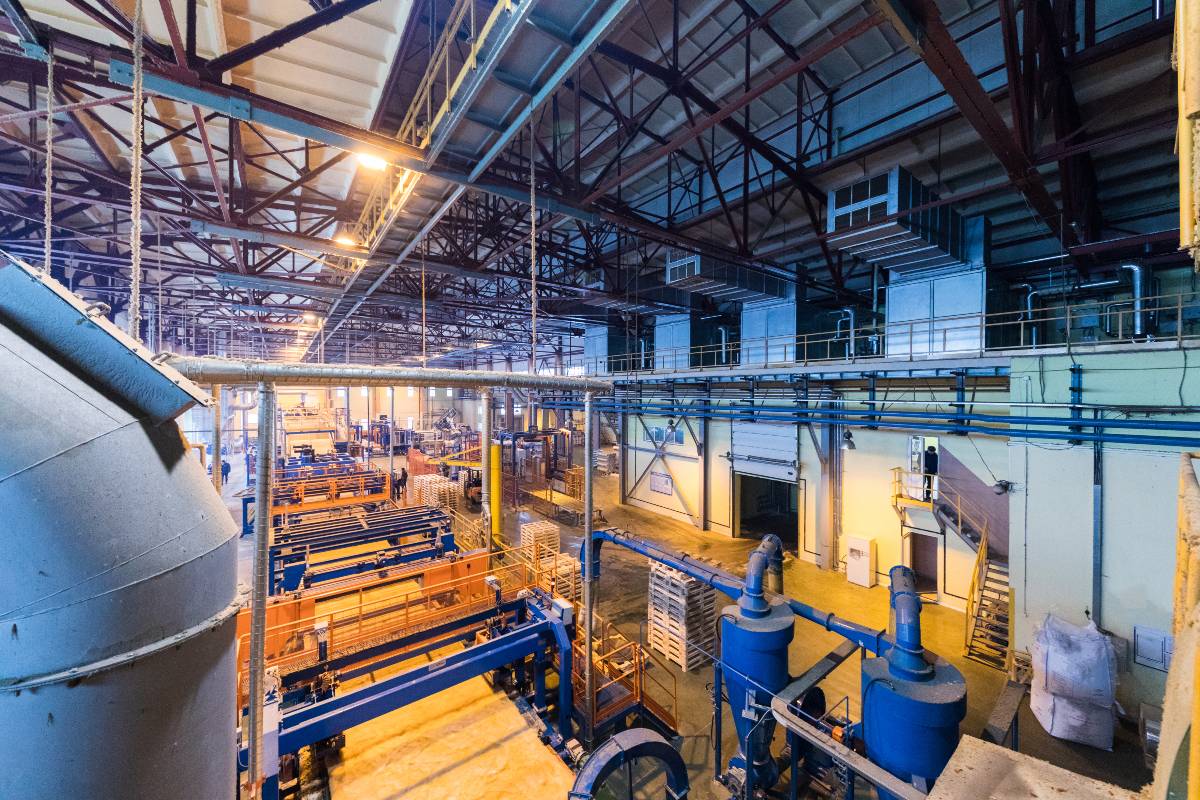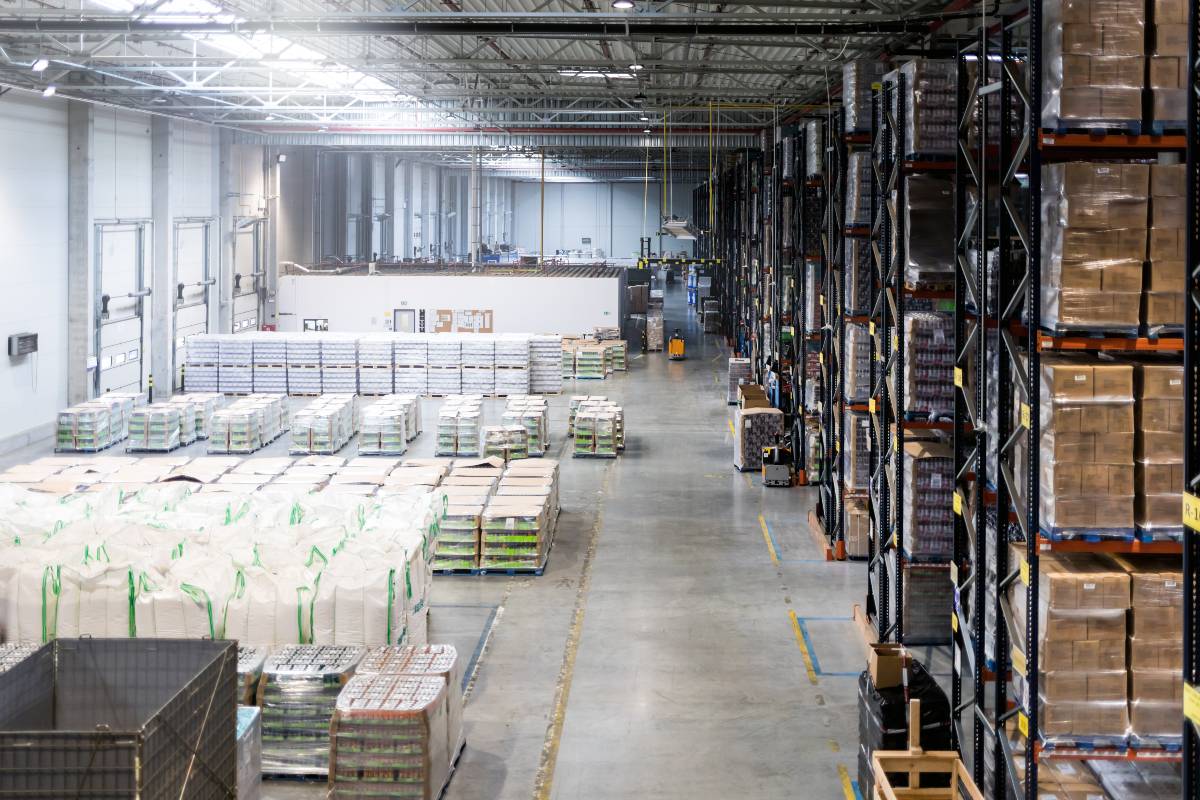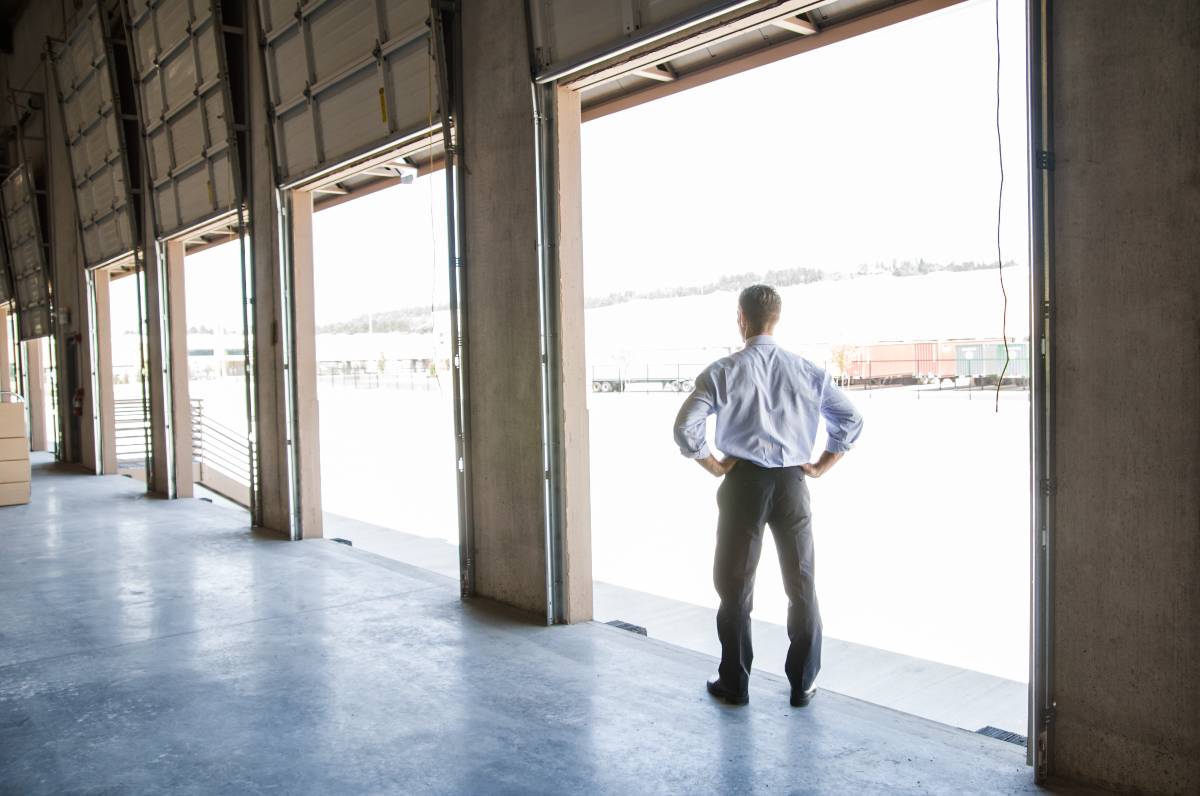As a commercial real estate expert with over 18 years of experience, I’m constantly analyzing the market forces shaping my clients’ leasing and investment opportunities. One of the most influential factors right now is evolving demographics and how population changes impact industrial property demand.
Key Takeaways
- Demographic shifts like population growth and aging are reshaping industrial property preferences and investment hotspots
- Markets with major population increases and land availability like Dallas, Houston, and South Florida are seeing a boom in large-scale distribution center construction.
- Urban density growth is driving demand for smaller last-mile warehouses and fulfillment center development with more amenities as e-commerce soars.
Table of Contents
The Industrial Property Demand
In my conversations with major distribution companies and 3PLs, they emphasize looking at population migration patterns within metro areas and broader regions to inform expansion plans. Businesses need modern, efficient facilities located close to their customer base, employees, and transportation infrastructure to minimize last-mile delivery times. The saying “retail follows rooftops” also increasingly applies to the logistics sector catering to surging e-commerce volumes.
So what are the key demographic changes influencing industrial property selections right now? And what markets offer the most promising development conditions versus looming challenges in accommodating these distribution facilities? Here, I’ll highlight three major demographic shifts driving the transformation in the industry along with investment implications.
What Are Demographic Trends Industrial Property Demand?
Demographic trends industrial property demand refers to how shifts in population growth, age distribution, and other demographic factors influence the real estate needs of industrial businesses involved in distribution, logistics, and manufacturing. As demographic changes occur in society, the facilities that companies require to serve growing or declining customer bases in various regions will transform.
How do Changing Demographics Impact Industrial Property Demand?
Demographic Shifts in Industrial Property Demand
Major demographic shifts like population growth, urbanization, and aging are greatly impacting the types of industrial property in demand today. Rapid growth in Southern metropolitan areas has spurred private investment and the development of large-scale distribution centers to serve surging local consumer bases. Meanwhile, increasing urban density in many cities has fueled the need for more last-mile delivery stations and smaller industrial formats located closer to urban cores. Additionally, an aging population’s consumption preferences and the predominance of millennials in the workforce are encouraging industrial properties to integrate more advanced technologies and attractive amenities.
Impact of Changing Demographics on Industrial Property Demand
As demographic factors change, so do the underlying facility requirements for logistics, transportation, and warehouse companies serving shifting local customer bases. Areas experiencing high rates of population growth require more large-scale regional distribution hubs to handle ballooning product volumes flowing in and out. Densely populated urban counties need smaller last-mile warehouses located within proximity as e-commerce deliveries soar. An aging society may demand more specialized medical supply chain infrastructure too. Attracting millennials to work in industrial facilities means integrating more modern, tech-enabled builds with amenities like green spaces and on-site fitness options. In summary, rapidly changing demographics are transforming industrial property needs.
Industrial Property Demand and the Aging Population
With longer life expectancies and the maturation of the Baby Boomer generation, industrial property demand patterns are impacted by the needs of an aging population. More demand is emerging for cold storage and climate-controlled buildings to accommodate pharmaceutical deliveries. Medical device distribution facilities are increasingly sought in metro regions with large retiree populations as well. Retirement community projects also often have light industrial components detached from main residential buildings as part of master plans. The surge in at-home healthcare services likewise stimulates local industrial space needs to serve visiting nurses or home health agencies.
Industrial Property Demand and the Influence of Millennials
Now the largest segment of the American workforce, millennials have a strong influence in shaping preferences for modern industrial property design and location selection. Tech-integrated, environmentally sustainable warehouse builds located closer to urban residential districts are increasingly popular. Millennial appeal factors like natural light, green building certifications, wellness amenities, and strong WiFi/cellular signals carry more weight in development decisions today to stay competitive in tight labor market conditions. Demand is also growing from millennial-led startups producing direct-to-consumer products in need of flexible, small-bay warehouses with room to scale locally over leasing massive big-box spaces initially.
2024 Trends Impacting Industrial Property Demand
Major 2024 industrial property demand trends tied to demographics include capacity expansion in markets. Continued densification of urban cores will further reduce already-low industrial vacancy rates within cities as e-commerce sales stay robust. Additionally, reshoring of manufacturing and inventory restocking will increase demand, with site selectors favoring locations where young skilled talent is growing as part of evaluations. Omnichannel logistics networks blending physical and digital retail will stimulate small-bay industrial property too. Finally, aging populations across several cities will drive medical, pharmaceutical, and healthcare-related distribution real estate projects.

What Are the Major Demographic Trends Influencing Industrial Property Demand in 2024?
The Influence of Population Growth on Industrial Property Demand
Areas projecting the fastest population growth in 2024 like Texas metropolitan regions will see substantial flows of speculative capital investing in industrial property development. Site selectors for major retailers, 3PLs, and manufacturing firms closely evaluate consumer migration patterns and density shifts when determining facility expansion plans, driving leasing demand in logistics hubs aligning with areas of increasing population. This allows positioning inventory, goods, and production closer to end markets to achieve faster fulfillment speeds as consumer expectations accelerate.
Demographic Trends and Investment in the Industrial Real Estate Market
Recent investor preference shifts show increased flows of capital targeting secondary industrial markets displaying positive demographic trajectories versus primary markets at more mature stages. Markets like Columbus, Phoenix, and Las Vegas present opportunities to enter earlier in growth cycles compared to stalwart coastal logistics centers already experiencing land and development constraints. Investors also increasingly track millennial migration patterns and home buying demand to identify potential evolving intermodal and warehouse locations before intensifying.
Demographic Shifts: Residential vs. Industrial Real Estate Investment
Despite housing market uncertainties recently, industrial real estate investment remains comparatively resilient for asset allocators evaluating property sectors. While single-family developers face affordability challenges inhibiting starter home construction, persistent demographic factors like export growth into expanding metros sustain tenant demand for distribution and fulfillment space. Demographic change should stimulate continued investment in specialized industries supporting healthcare delivery to age groups. Though moderating, e-commerce habit formation among millennials still outpaces overall retail, underlying need for local logistics networks.
Industrial Property Demand and the Impact of Millennials
Raised with smartphones and expecting immediacy, millennials drive many shifting logistics patterns through their buying preferences, whether business owners or consumers. Small startups eschew fixed long-term leases in major logistics regions to retain flexibility, increasing demand for low-commitment options like flex industrial space blending office and warehouse needs. Millennials also over-index for online grocery adoption versus other cohorts, expanding refrigerated infrastructure requirements in local metro footprints. Millennial home buying demand significantly explains net migration to secondary cities, determining site selection priorities for companies entering new regions.
2024 Dynamics of Industrial Property Demand
Major 2024 demographic dynamics influencing industrial property demand include increased private capital investment into markets like Southeast Florida, DFW, and Atlanta undergoing rapid population influx. Urban density growth and millennials’ preference shifts will further reduce already minuscule industrial vacancy rates within tier-one cities specifically. Additionally, baby boomer retirement escalation across certain metros will drive expanded cold storage and pharmaceutical distribution space needs. Finally, reshoring tailwinds and inventory restocking supporting consumer spending depend partly on skilled younger labor availability across sites assessed.
Population Growth Concentrated in South and West
Metropolitan areas across the South and West like Dallas, Houston, and South Florida have experienced massive population growth in recent years. According to Census Bureau estimates, Houston and Dallas were America’s two fastest-growing large metro areas by numeric change from 2020 to 2021. Houston gained over 169,000 new residents just in that single year.
Rapid population expansion means more consumer demand and households to deliver goods to in the region. So naturally, prominent ports and logistics hubs like these Texas cities become even larger magnets for distribution center development. Prologis research shows net absorption of warehouse space in Dallas and Houston doubled over the past five years compared to the previous five.
Builders have responded with a wave of speculative large-bay distribution center construction, with over 10 million square feet currently underway in both metros. But developable land is rapidly vanishing. Dallas-Fort Worth has less than 12 months of industrial-zoned land inventory left at the current pace. As vacant land dries up, the focus shifts to sites allowing vertical expansion or brownfield redevelopment.
We’re advising clients not to wait in these high-growth areas but to secure well-located positions ASAP if entering new markets. Strong population projections support sustained tenant demand, but shovel-ready and approvable land is disappearing.

Urbanization Driving Last-Mile Adaptations
Densely populated urban counties also saw substantial growth over the last decade, reversing the previous suburbanization pattern. As younger generations flock to cities and older generations age in place, urban density builds.
Fulfilling consumer orders in congested metro areas requires small, networked last-mile warehouse facilities located near retail stores or directly to homes. A rule of thumb is keeping last-mile distribution sites within an hour’s drive time for same-day or next-day delivery windows.
E-commerce giant Amazon has led the charge in developing its last-mile logistics network, with over 150 million square feet of facilities globally so far. Competitors are racing to catch up, but securing well-located urban industrial land at a reasonable cost is difficult.
We’re advising clients to target secondary land parcels in the urban core and design adaptable buildings, as Amazon and other leaders continue expanding their automated footprints and raising market rent expectations. Two-story warehouses with ramp access are also gaining ground.
Solutions Needed as Developable Land Vanishes
Mature coastal population centers with major ports and air cargo hubs like Los Angeles, New York metro, South Florida, and Northern New Jersey possess inherent logistics advantages. But they face the toughest road ahead accommodating insatiable industrial demand as vacant land disappears.
South Florida typifies the land-constrained coastal metro dilemma. Population growth is among the highest nationally, and Miami International Airport and PortMiami provide multimodal transport. Yet with the ocean and Everglades enclosing developable land, the industrial market vacancy rate stays ultra-low at 2.3% while asking rents climbed 7.6% last year.
With no room to expand horizontally, the region is finally embracing vertical distribution solutions. Developer Bridge Industrial just announced South Florida’s first multi-level warehouse project. We expect similar big ideas to emerge in other maturing metros battling land scarcity.
Ultimately, demographic drivers indicate no slowdown ahead in industrial property demand tied to population and density growth. Yet some traditional hub markets are hitting a wall without more creative land use visions. Tracking consumer migration patterns, construction trends and rent growth indicators remains imperative for advising clients on where the next hotspot will emerge.
I welcome any questions on how these evolving commercial real estate dynamics apply to your unique business situation. My team and I have our fingers on the pulse of major metro industrial trends, key infrastructure moves, and the latest innovations in specialized building solutions. We look forward to helping take your supply chain real estate strategy to the next level as demographics keep transforming markets!
FAQ
How can maturing metro areas adapt to changing demographics and land constraints?
Maturing coastal metros can embrace new concepts like multistory warehouses, invest in brownfield remediation, and leverage technology to maximize efficiency on existing industrial land. Proactive infrastructure upgrades also support density growth in land-crunched areas.
What sustainable construction trends are emerging in industrial property?
Sustainable initiatives like rooftop solar, EV charging stations, LED lighting, low-flow plumbing fixtures, and rainwater capture systems are growing in modern warehouses. Using higher percentages of recycled building materials is also becoming more mainstream.
Where is there still land available for new industrial development?
Markets across the Southeast, Southwest, and Midwest possess substantial land availability to support further distribution center construction. Savannah, Memphis, Kansas City, Columbus, and Indianapolis are examples with room to build.
How is e-commerce transforming distribution networks?
E-commerce requires vastly more warehouse space per sales volume compared to brick-and-mortar retail. Surging volumes are forcing networks to expand facilities while positioning frequent delivery nodes closer to end consumers in a hub-and-spoke model.
What amenities are modern industrial buildings integrating more today?
As competition for logistics workers heats up, modern buildings feature more on-site amenities like shaded outdoor break areas, mother’s rooms for nursing, on-demand food trucks, cafes, and fitness centers to attract labor.
Conclusion
To further discuss how evolving demographic factors like population growth, aging and urbanization are impacting industrial property preferences and investment opportunities, schedule a consultation with me. My team stays on top of the latest market intelligence and infrastructure moves to advise clients on the optimal locations, building specifications, and site solutions to fulfill unique distribution needs. I look forward to sharing my insights and connections with you soon!




